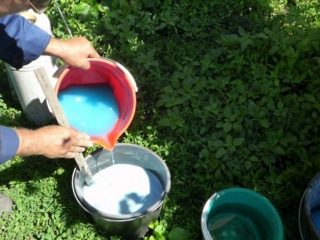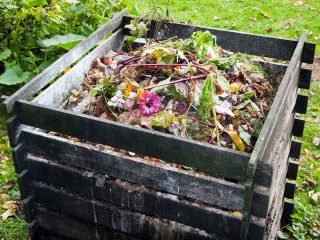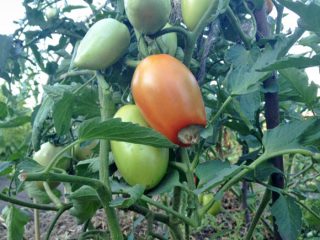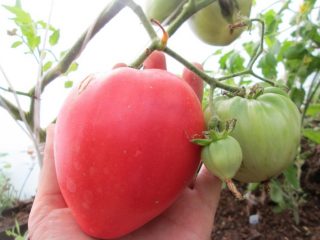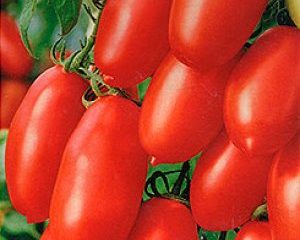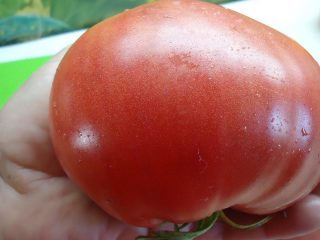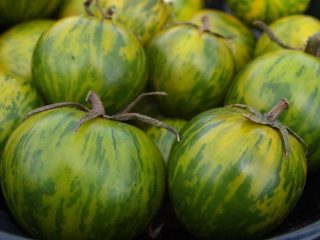Content
Tomato Chick is an original variety that appeared quite recently and has gained incredible popularity. The bushes bear fruit for a long time and are unpretentious in care. It is worth familiarizing yourself with all the features of agricultural technology, the advantages and disadvantages of the species.
History of origin
The Yellow Chick tomato is a unique new product bred by Russian breeders in 2022. The originator is the agricultural company Seeds of Altai. The first batch of trial seeds quickly sold out among summer residents back in 2021.

High-yielding variety bears fruit until the coldest weather
The variety has not yet been included in the State Register, but is already popular among gardeners from the CIS countries.
Description of the tomato variety Chick with photo
This is one of the sunniest and super-yielding varieties with an exotic fruit shape and excellent taste.Indeterminate tomato is yellow in color, small-fruited, not capricious to growing conditions. With proper care, the crop bears fruit abundantly for a long time. You can grow the Chick variety for personal and commercial purposes. The fruits are stored for a long time without loss of varietal qualities and taste.
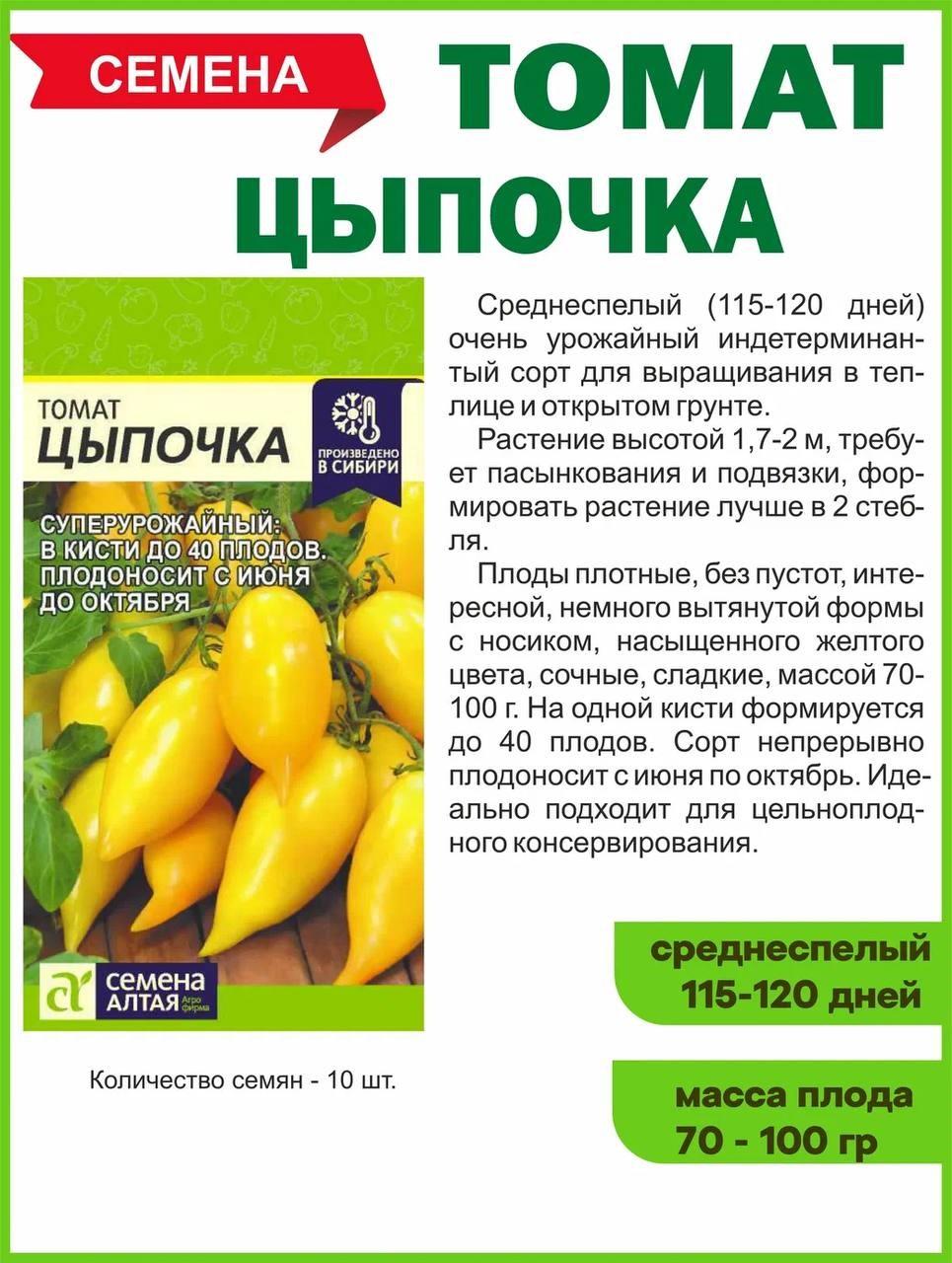
Initially, the variety was bred for cultivation in a greenhouse, but residents of regions with mild climates began to cultivate it in the garden
Characteristics of Chick tomatoes
Before planting Yellow Chick tomatoes, you should familiarize yourself with their characteristic features.
- This is an indeterminate variety of tomato crop. The height of the Chick tomato bush usually reaches 1.5-2 meters.
- Based on the characteristics of the Chick tomato leaves, they are emerald green in color with a matte surface. The specimens are medium in size, oblong, elliptical, and have slight pubescence on the outer part.
- The fruit clusters are powerful, long, and have an unusual shape. They overlap each other. The first cluster of crops is planted after 9-10 leaves. Up to 40 tomatoes are formed on one brush.
- The fruits are medium-sized, oblong, slightly ribbed, with a spout at the end. Outwardly, they look like lemons. Mature specimens of the Chick variety are colored rich yellow, sometimes honey or reddish. They weigh about 70-100 g.
- The skin is smooth, durable, and prevents tomatoes from cracking. The pulp is dense and juicy, without voids. There are a small number of seeds inside.
- The root system of the indeterminate variety is well developed. The stems are strong, thick, and hold fruit well.
- Yellow tomatoes have a sweetish, neutral taste. The sourness is very relative, almost not felt.
Ripe tomatoes of the Chick variety emit a weak aroma, which is not inherent in every variety of tomato crop.
Ripening and productivity of the Chick tomato
The Chicken variety tomato is famous for its long fruiting period, which lasts from June to October. The fruits ripen 95-100 days after the first shoots appear. Many fruit clusters are formed. Tomatoes ripen unevenly, and ripe specimens do not fall off.
From 1 bush you can harvest up to 40 tomatoes, about 5-8 kg. Plants grown in greenhouses bear fruit more intensively. The harvest can be collected up to 10 kg from one tomato bush. The fruits are harvested as they ripen, and the autumn batch can be stored. They retain their original appearance for about two months if stored with the fruit stem.
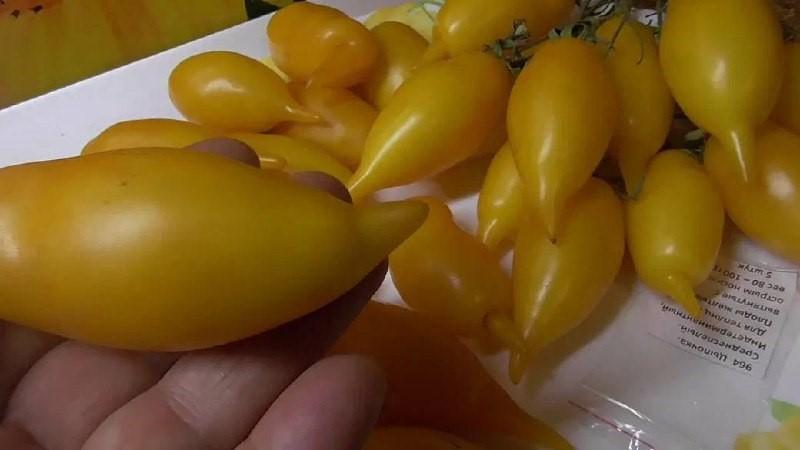
Ripe fruits do not crack, the skin is quite dense
Resistance to diseases and pests
With proper care, the Chick variety is not susceptible to diseases and pest attacks. A member of the Solanaceae family loses its immunity when grown in inappropriate conditions.
In what regions is it grown?
Manufacturers have declared a wide geography of cultivation of Chick tomatoes. The variety is suitable for cultivation in almost all regions of Russia. In the North and in the Middle Zone, it is desirable to cultivate vegetables in greenhouse conditions. Residents of the southern regions can safely grow tomatoes in the garden.
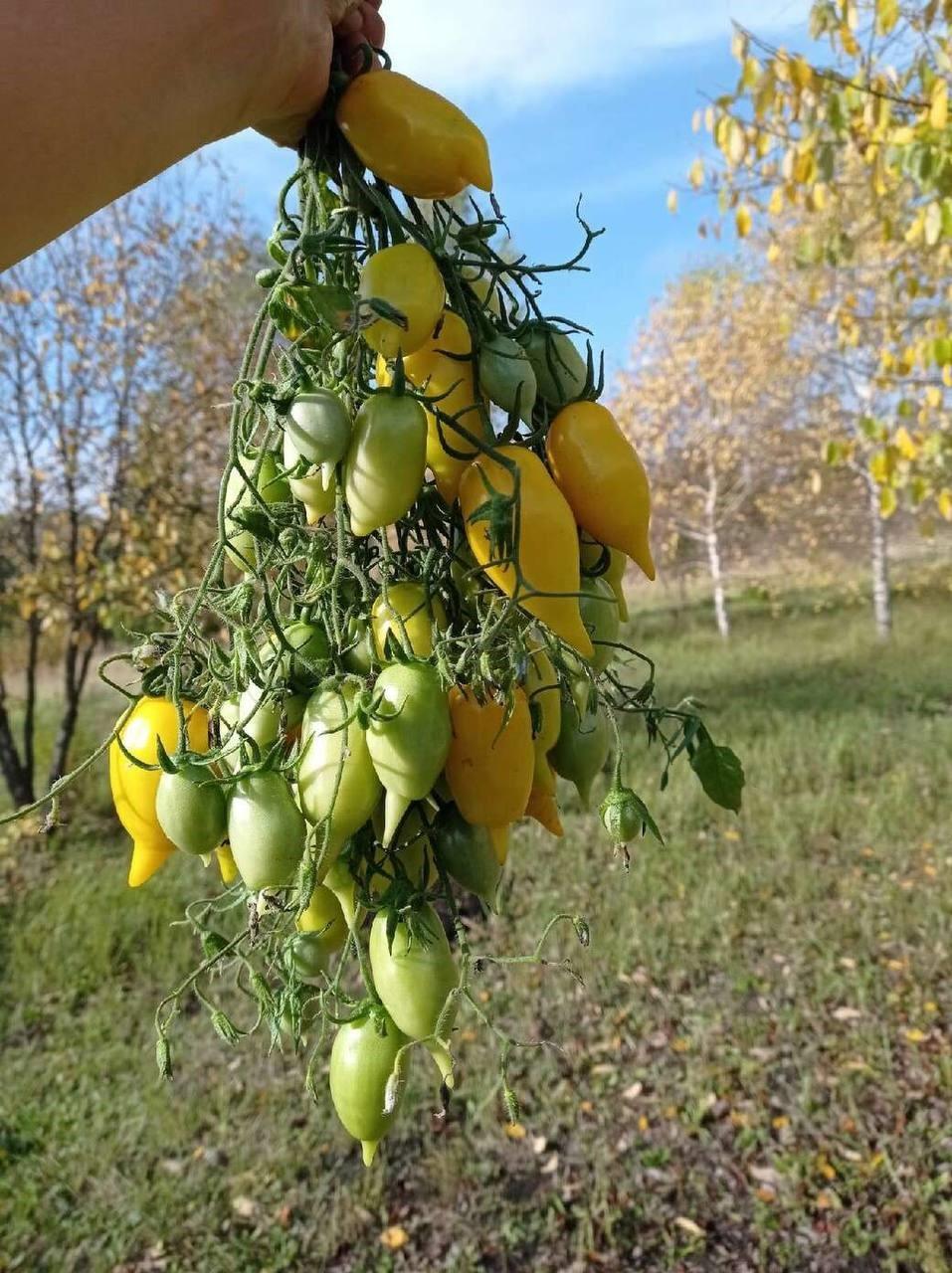
In the South, it is recommended to insulate plantings by mulching and covering with non-woven material
Application area
Exotic-shaped tomatoes of the Chick variety are often grown for whole-fruit pickling or canning. Due to the compact shape of the fruit and strong skin, they do not crack in jars. Tomatoes are also delicious fresh, in salads.They are used to make juices, vegetable sautés, winter preparations and even baby purees.
Advantages and disadvantages
Lemon tomatoes can be used in the diet menu due to their low calorie content. The variety of yellow tomatoes is incredibly light-loving, which justifies the sunny shade of the fruit.
Pros:
- ease of care;
- productivity;
- possibility of growing in a greenhouse or garden;
- versatility of application;
- great taste of tomatoes;
- excellent keeping quality;
- long fruiting period;
- high immunity to diseases and beetle attacks.
Minuses:
- bushes need gartering and pinching;
- the plant is tall and requires a lot of space on the site;
- the Chick variety is demanding when it comes to watering;
- The fruits are small and weigh little.
Landing rules
The rules of agricultural technology for the Chick tomato are very simple. Seedlings need to be planted according to a 40*40 cm pattern. It is customary to maintain a distance of 0.5 m between each hole. Planting work begins in mid-April. The seedlings should form 6-8 leaves.
Work algorithm:
- The holes are dug 3 days before planting to allow the soil to warm up. They add 1 tbsp. l. potassium sulfate granules, 1 tbsp. l. superphosphate, sprinkle with earth.
- Tomato seedlings are carefully placed in the hole, after straightening the rhizome. Plants are buried to the height of the first true leaves.
- The root system is sprinkled with soil, and the root area is compacted slightly with your hands.
- The planted bushes are watered with 1 liter of settled water, possibly with potassium permanganate to disinfect the soil.
Yellow tomatoes prefer to grow in a well-lit, sunny place where there are no drafts. This will ensure sweet fruits and minimal risk of developing diseases and beetle attacks.
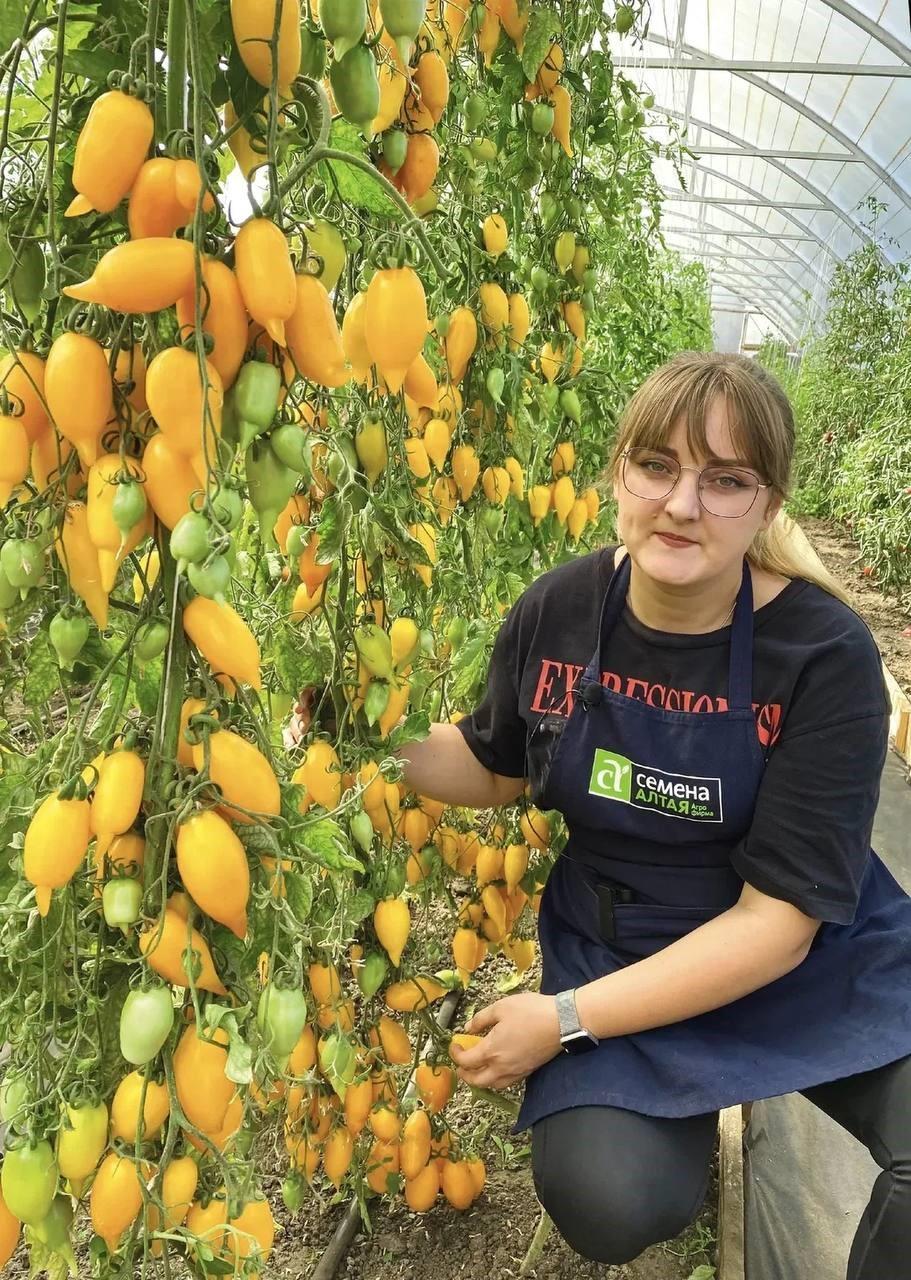
The Chicken variety is a real achievement of Altai breeders
Care instructions
Exotic tomato varieties require standard but competent care.
General tips:
- The culture is especially moisture-loving, therefore, you need to water the bushes 2 times a week. The top layer of soil should not be allowed to dry out. It is recommended to irrigate tomatoes with settled water at room temperature. It is better to water the beds early in the morning or in the evening, after sunset. 1 bush will need about 3 liters of water.
- The Chick variety will bear fruit abundantly if it is fed periodically. The first feeding is carried out 2 weeks after transplanting into the garden. Use the tincture on bird droppings or mullein. The next replenishment is applied after 10 days, using complex mineral compositions. The plant is fertilized the third time when the first tomatoes ripen, and the fourth time 2 weeks after. It is customary to use superphosphate and Agricola-3.
- Tomato bushes need to be tied up because they are tall. Thanks to the procedure, the shoots will not fall to the ground.
- The row spaces need to be weeded regularly to remove weeds. They spread diseases and pests and rob vegetables of micronutrients from the soil.
You can cover the plantings for the winter with a layer of mulch from spruce branches, straw, and cover the top with lutrasil.
Formation of a tomato bush Chick
Forming Chick tomatoes is done in two stems. Side shoots form as the tomatoes grow. They do not have time to ripen normally and draw out a lot of nutrients. They must be removed in the first stages of bush growth. 2-3 main shoots are left on each plant. When the tomatoes begin to fill, there should not be a single stepchild on the bushes.It is necessary to remove side shoots 3-5 cm long.
In the greenhouse, a Chick tomato is formed into one stem and tied to a support. It is customary to leave the main shoot where the first flower cluster is formed. The remaining specimens with stepchildren are removed. You can also pinch the tops at human height.
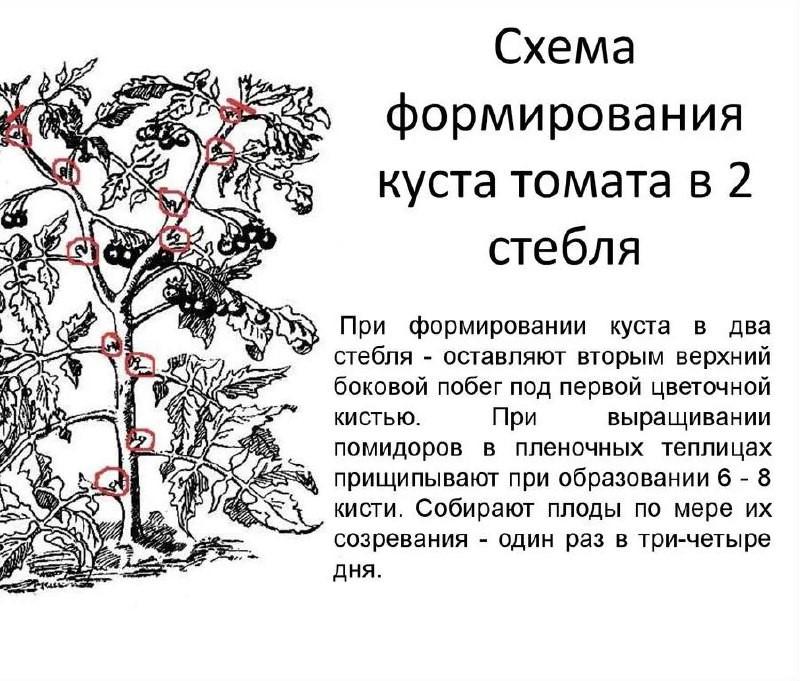
In a greenhouse you can form a tomato using the topping method
Pest and disease control
The bushes are periodically attacked by harmful insects. They need to be dealt with comprehensively:
- Mole crickets are pests of Solanaceous crops, which can be destroyed with the help of powerful insecticides, tinctures of vinegar or hot red pepper.
- Wireworms eat the roots of the plant. To combat them, acidic soils are alkalized.
- Cutworms are collected by hand and destroyed away from the site.
- Colorado beetles. You can set traps and use insecticides.
Exotic Chick tomatoes are sometimes susceptible to diseases. Typically these are blossom end rot, mosaic, late blight, anthracnose and fomoz. To cure bushes, they are treated with fungicides and folk remedies. Affected parts of plants must be removed and burned away from the garden. Before the new season, the soil must be dug up and treated with copper sulfate or a solution of hot potassium permanganate for the purpose of disinfection.
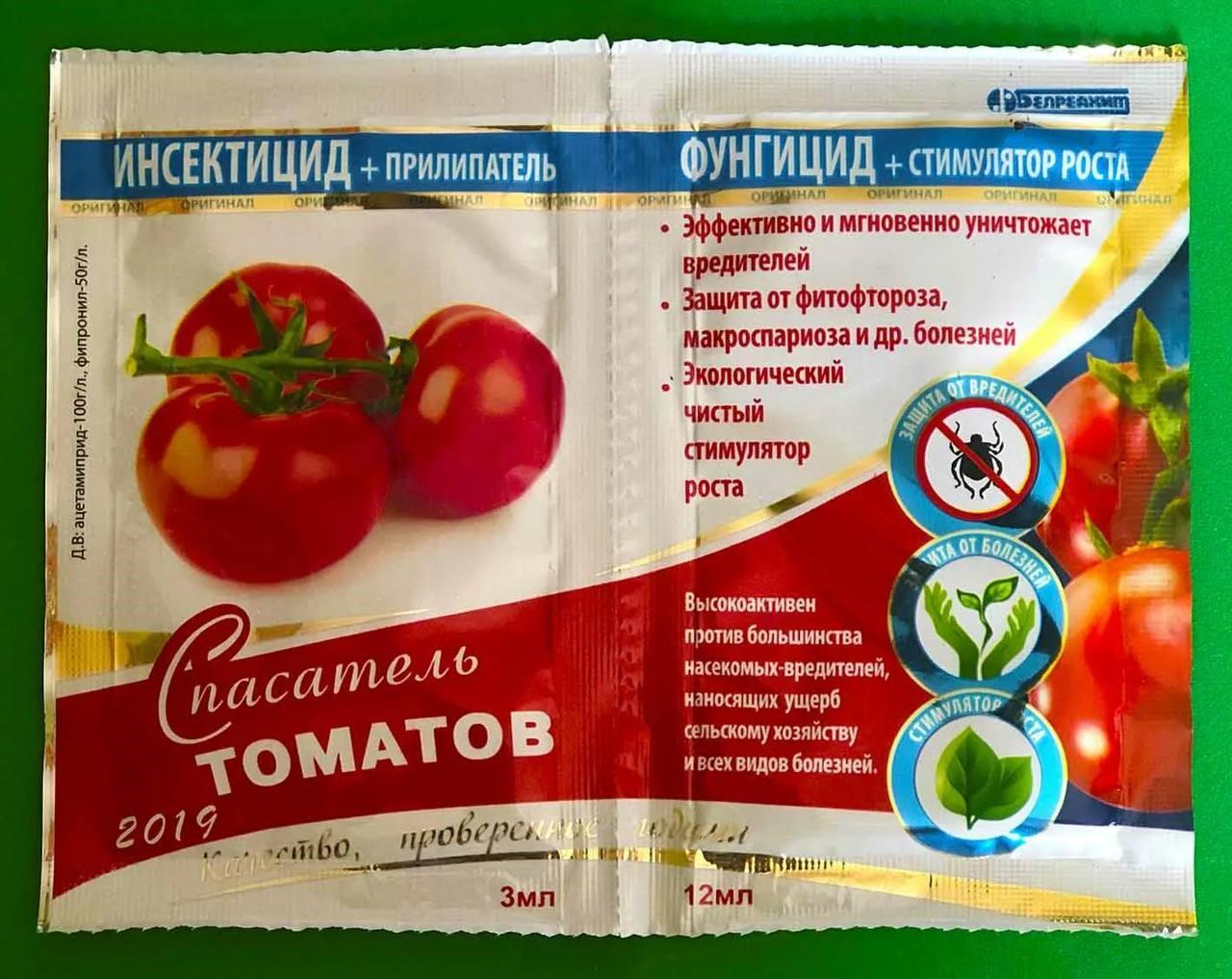
You can use chemicals to kill diseases and pests - this is Tomato Rescuer, Hom, Imidor or Vermitek
Conclusion
Tomato Chick is a new variety of yellow-fruited tomatoes, which is famous for its high yield and long-term fruiting. The plant is unpretentious in care; the main thing is to water it on time, fertilize it, weed the rows and form bushes. Then the vegetable crop will bear tasty, attractive-looking fruits.
Reviews from gardeners about the Chick tomato
